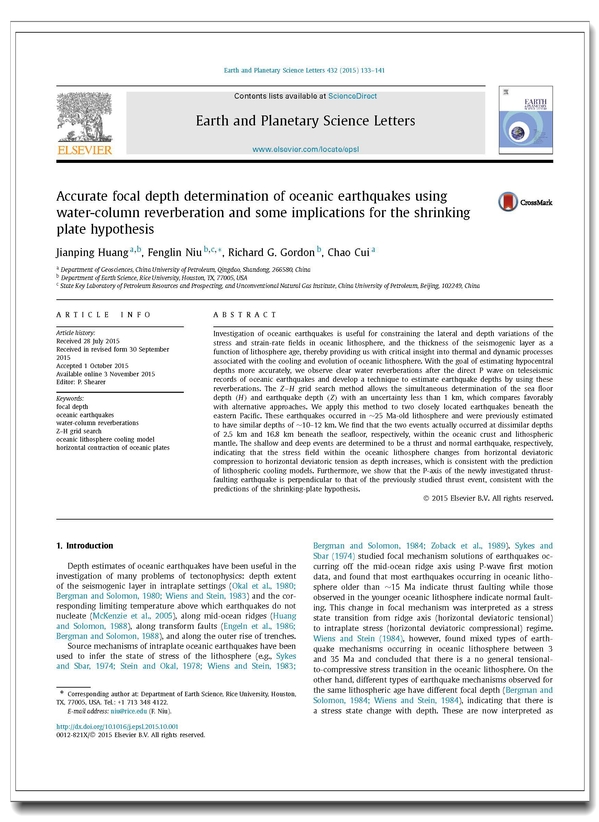Jianping Huang, Fenglin Niu, Richard G. Gordon, Chao Cui,
Accurate focal depth determination of oceanic earthquakes using water-column reverberation and some implications for the shrinking plate hypothesis
Earth and Planetary Science Letters,
Volume 432, 2015, Pages 133-141, ISSN 0012-821X,
https://doi.org/10.1016/j.epsl.2015.10.001
Abstract: Investigation of oceanic earthquakes is useful for constraining the lateral and depth variations of the stress and strain-rate fields in oceanic lithosphere, and the thickness of the seismogenic layer as a function of lithosphere age, thereby providing us with critical insight into thermal and dynamic processes associated with the cooling and evolution of oceanic lithosphere. With the goal of estimating hypocentral depths more accurately, we observe clear water reverberations after the direct P wave on teleseismic records of oceanic earthquakes and develop a technique to estimate earthquake depths by using these reverberations. The Z–H grid search method allows the simultaneous determination of the sea floor depth (H) and earthquake depth (Z) with an uncertainty less than 1 km, which compares favorably with alternative approaches. We apply this method to two closely located earthquakes beneath the eastern Pacific. These earthquakes occurred in ∼25 Ma-old lithosphere and were previously estimated to have similar depths of ∼10–12 km. We find that the two events actually occurred at dissimilar depths of 2.5 km and 16.8 km beneath the seafloor, respectively, within the oceanic crust and lithospheric mantle. The shallow and deep events are determined to be a thrust and normal earthquake, respectively, indicating that the stress field within the oceanic lithosphere changes from horizontal deviatoric compression to horizontal deviatoric tension as depth increases, which is consistent with the prediction of lithospheric cooling models. Furthermore, we show that the P-axis of the newly investigated thrust-faulting earthquake is perpendicular to that of the previously studied thrust event, consistent with the predictions of the shrinking-plate hypothesis.


